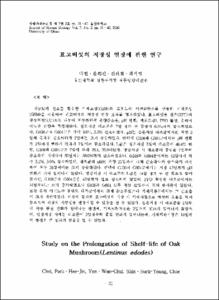척추경 나사를 이용한 요추부 척추관 협착증의 치료
- Alternative Title
- Treatment of Lumbar Spinal Stenosis using Transpedicular Screws
- Abstract
- Lumbar spinal stenosis was defined as any type of narrowing of the vertebral canal, nerve root canals or intervertebral foramina. Complete decompression of the dural sac and nerve root is a primary objective of surgery, but stabilization of the unstable spine created by the decompression is as important as the decompression itself in the treatment of spinal stenosis. This study was performed to evaluate the effectiveness of transpedicular screw fixation in stabilization after decompression and in reduction of spondylolisthesis with concomittent posterolateral fusion. 36 patients with lumbar spinal who were treated by decompression, transpedicular screw fixation and posterolateral fusion during the period from Sep. 1989 to Jun. 1991 were analysed and following results were obtained. The patients were followed for a mean of 18.5 months(range, 12-35).
1. The etiologic factors of lumbar spinal stenosis of 36 patients were spondylolisthesis in 21 patients(58.3%), degenerative in 13 patients(36.1%) and iatrogenic in 2 patients(5.5%).
2. In cases of spondylolisthesis, the average gain of reduction of slippage was 13.0% and the average loss of reduction was 2.0% in final followed up films.
3. 34 patients(94.4%) showed solid union of posterolateral bone graft at the mean of 3.5 months after operation(range, 3.0-4.5).
4. Symptomatic reliefs after operation were not significantly influenced by the level, site and etiology of the stenosis. So, complete decompression is essential in the treatment of the spinal stenosis.
5. The clinical results were excellent in 16 patients(44.4%), good in 15 patients(41.7%) and fair in 5 patients(13.9%).
6. Segmental spinal instrumentation with transpedicular screws is not only a reliable method of stabilization after wide decompression but also a good method of reduction and maintenance in the treatment of spondylolisthesis. Instrumentation allows better postoperative care and early ambulation.
Lumbar spinal stenosis was defined as any type of narrowing of the vertebral canal, nerve root canals or intervertebral foramina. Complete decompression of the dural sac and nerve root is a primary objective of surgery, but stabilization of the unstable spine created by the decompression is as important as the decompression itself in the treatment of spinal stenosis. This study was performed to evaluate the effectiveness of transpedicular screw fixation in stabilization after decompression and in reduction of spondylolisthesis with concomittent posterolateral fusion. 36 patients with lumbar spinal who were treated by decompression, transpedicular screw fixation and posterolateral fusion during the period from Sep. 1989 to Jun. 1991 were analysed and following results were obtained. The patients were followed for a mean of 18.5 months(range, 12-35).
1. The etiologic factors of lumbar spinal stenosis of 36 patients were spondylolisthesis in 21 patients(58.3%), degenerative in 13 patients(36.1%) and iatrogenic in 2 patients(5.5%).
2. In cases of spondylolisthesis, the average gain of reduction of slippage was 13.0% and the average loss of reduction was 2.0% in final followed up films.
3. 34 patients(94.4%) showed solid union of posterolateral bone graft at the mean of 3.5 months after operation(range, 3.0-4.5).
4. Symptomatic reliefs after operation were not significantly influenced by the level, site and etiology of the stenosis. So, complete decompression is essential in the treatment of the spinal stenosis.
5. The clinical results were excellent in 16 patients(44.4%), good in 15 patients(41.7%) and fair in 5 patients(13.9%).
6. Segmental spinal instrumentation with transpedicular screws is not only a reliable method of stabilization after wide decompression but also a good method of reduction and maintenance in the treatment of spondylolisthesis. Instrumentation allows better postoperative care and early ambulation.
- Issued Date
- 1992
- Type
- Research Laboratory
- Alternative Author(s)
- Kim, Key Yong; Kim, Yung Tae; Kang, Joon Soon; Nah, Hwa Yeop
- Publisher
- 울산의대학술지
- Language
- kor
- Rights
- 울산대학교 저작물은 저작권에 의해 보호받습니다.
- Citation Volume
- 1
- Citation Number
- 1
- Citation Start Page
- 88
- Citation End Page
- 99
- Appears in Collections:
- Research Laboratory > The ULSAN university medical journal
- 파일 목록
-
-
Download
 000002024974.pdf
기타 데이터 / 497.22 kB / Adobe PDF
000002024974.pdf
기타 데이터 / 497.22 kB / Adobe PDF
-
Items in Repository are protected by copyright, with all rights reserved, unless otherwise indicated.